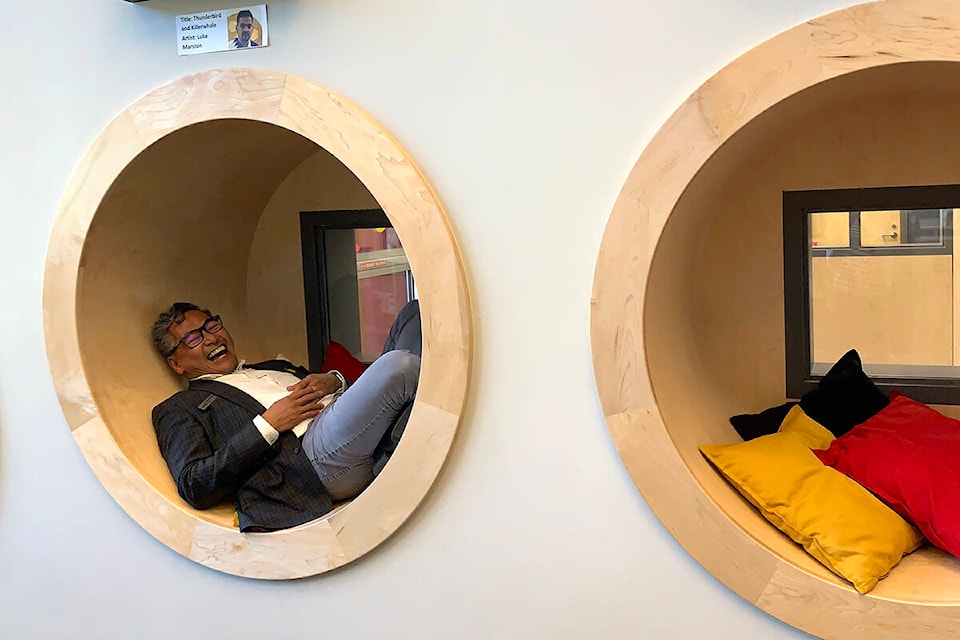About 270 Abbotsford students and their teachers have been settling into the district’s newest school over the last few weeks.
And on Tuesday, they opened the doors to special guests for an official ribbon cutting ceremony, including tours led by volunteer parents, a catered lunch and speeches.
Irene Kelleher Totí:ltawtxw Elementary, on Eagle Mountain, has a cosy feeling of a home, with natural light, reading nooks in the library and wood accents throughout. Light greens and blues are featured on the floors and in decorations on the walls.
The hallways flow like a river, and the lighting uniquely bends to the shape of the ceilings. The windows reach to the ground, or close to, letting light soak classrooms, the gymnasium and hallways. And that’s intentional, says Justin Dyck, architect and partner of Station One Architects.
He told the gathered audience that while schools used to be designed to train children for factory work of the day, they now are built with the whole child in mind.
“Natural light is a main feature,” he said, “where it used to be discouraged.”
They are low to the ground so they are accessible to the youngest, and shortest, people in the building. And in each primary classroom on the ground floor, large windowed sliding doors can be opened to create indoor/outdoor classrooms. The outside area (still under construction) is designed to be fully enclosed for safety, and the sliding door tracts are flat to the ground for ease of accessibility.
On a tour of the school, volunteer Tanya Coghill explains various small details throughout the two-storey school that echo the same consideration of young students.
The washrooms upstairs, in the intermediate area of the school, are individual and private. Rather than having a communal sink area to connect them, that is featured in the hallway. The openness of the sinks provides a few benefits, Coghill explains. One is that it encourages hand washing. The second is that it reduces vandalism, and as such reduces operational costs for the district.
It also provides gender equity for staff, students and guests to the school
“It’s reflective of wanting to be inclusive,” Dyck says. “I refer to this school as my unicorn… If you find one, it’s quite magical.”
The signs outside each room state their use in English, Halquemeylem and braille. The First Nation artwork on the walls includes the name of each artist, where they’re from, and their photographs.
The entire design of the school is based on its location and First Nation history, Dyck explains. When Sumas Lake would flood, Indigenous people would move up the area’s hills, such as Eagle Mountain, bringing their canoes with them. The school is designed to be the inside of an upturned canoe, and the significance of that inspiration is throughout the building.
So, too, is the school’s namesake, Irene Kelleher.
Kelleher was born and raised in Matsqui and was the first person of Indigenous ancestry to receive a B.C. teaching certificate. She faced prejudice both based on her race and gender, as she was initially rejected after applying to teach in Abbotsford.
She began teaching in a one-room schoolhouse near Terrace, B.C. in 1921 and eventually taught at Abbotsford’s North Poplar Elementary, where she became principal during the Second World War.
She retired in Abbotsford in 1964 after 44 years of teaching and died on March 16, 2004 at the age of 102.
READ MORE: Mentorship program for Stó:lō youth comes of age after a decade
@CHWKcommunity
jessica.peters@abbynews.com
Like us on Facebook and follow us on Twitter.
Want to support local journalism during the pandemic? Make a donation here.
